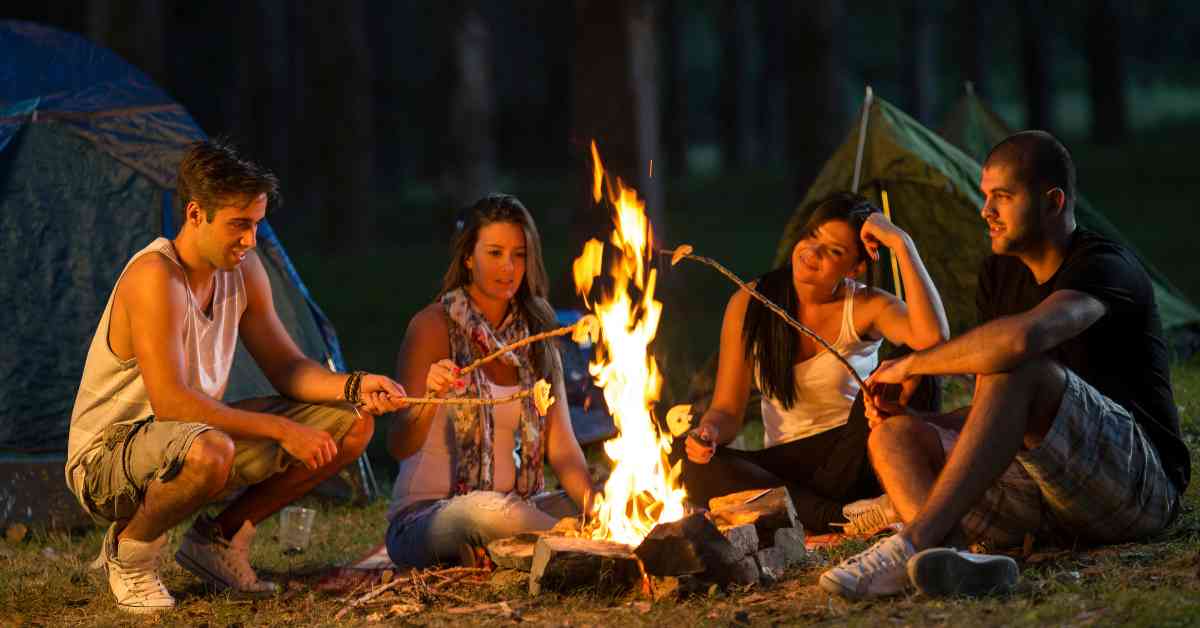Bluefire Wilderness Therapy is a renowned program designed to assist troubled teens and young adults facing emotional, social, and behavioral challenges. Utilizing a multifaceted approach that integrates clinical expertise, adventure experiences, academic assessments, and a family systems approach, Bluefire Wilderness Therapy stands out as a premier wilderness therapy program. This article delves into the various aspects of Bluefire Wilderness Therapy, highlighting its unique features, therapeutic methodologies, and the profound impact it has on participants and their families.
Understanding Bluefire Wilderness Therapy
The Essence of Wilderness Therapy
Wilderness therapy is a therapeutic intervention that takes place in a natural outdoor setting. It combines traditional therapeutic techniques with experiential, adventure-based activities to promote personal growth and development. The underlying principle is that the challenges and unpredictability of the wilderness create opportunities for individuals to develop resilience, self-awareness, and positive coping mechanisms.
Bluefire Wilderness Therapy: An Overview
Bluefire Wilderness Therapy caters to pre-teens (ages 11-14), teens (ages 15-17), and young adults (ages 18-28). The program is designed to address a wide range of issues, including depression, anxiety, defiance, substance abuse, and academic underperformance. By immersing participants in a structured yet flexible wilderness environment, Bluefire Wilderness Therapy aims to foster lasting change and personal growth.
Core Components of Bluefire Wilderness Therapy
Clinical Expertise and Therapeutic Approach
One of the defining features of Bluefire Wilderness Therapy is its integration of clinical expertise into the wilderness experience. Licensed therapists with extensive experience in working with troubled youth are actively involved in the program. These therapists are “in the field” with clients four days per week, providing individual and group therapy sessions.
- Individual Therapy: Participants receive one-on-one therapy twice a week, allowing for personalized attention and tailored therapeutic interventions.
- Group Therapy: Four times a week, participants engage in group therapy sessions, which foster peer support, social skills development, and communal problem-solving.
Family Systems Approach
Family involvement is a crucial aspect of Bluefire Wilderness Therapy. The program employs a comprehensive family systems approach to help reconnect and strengthen family relationships. This approach includes:
- Family Therapy Sessions: Conducted via video conferencing, these sessions enable parents to actively participate in the therapeutic process, even from a distance.
- Parent Workshops: These workshops provide education and support to parents, equipping them with the tools and strategies needed to support their child’s progress.
Adventure Therapy and Experiential Learning
Adventure therapy is an integral part of Bluefire Wilderness Therapy. Through a variety of outdoor activities, participants are encouraged to step out of their comfort zones, face challenges, and develop new skills. Key adventure therapy components include:
- Hiking and Backpacking: These activities promote physical fitness, self-reliance, and a connection with nature.
- Rock Climbing: This activity helps participants build trust, overcome fears, and develop problem-solving skills.
- Equine Therapy: Weekly sessions with horses teach participants about communication, empathy, and relationship building.
Academic Assessments and Support
Recognizing the importance of academic success, Bluefire Wilderness Therapy incorporates academic assessments and support into its program. Participants engage in educational activities that are designed to address learning gaps and promote a positive attitude towards education. This includes:
- Individualized Learning Plans: Tailored to meet each participant’s unique needs and learning style.
- Academic Support: Provided by educators who work closely with therapists to integrate academic goals with therapeutic objectives.
The Therapeutic Process and Outcomes
Initial Assessment and Personalization
The journey at Bluefire Wilderness Therapy begins with a comprehensive assessment. This initial evaluation helps therapists and staff understand the participant’s strengths, challenges, and therapeutic needs. Based on this assessment, a personalized treatment plan is developed, outlining specific goals and strategies.
The Role of Nature and Outdoor Living
Living in the wilderness environment plays a pivotal role in the therapeutic process. The simplicity and unpredictability of nature provide a stark contrast to the often chaotic and technology-driven lives of participants. This setting encourages mindfulness, self-reflection, and a deeper connection to the natural world.
Phases of the Program
The program is structured into distinct phases, each with its own set of objectives and milestones. These phases guide participants through a progressive journey of self-discovery and growth.
- Phase 1: Acclimation and Engagement: Participants adapt to the wilderness environment, establish trust with their peers and staff, and begin to engage in therapeutic activities.
- Phase 2: Exploration and Insight: Participants delve deeper into their personal challenges, gain insights into their behavior, and develop coping strategies.
- Phase 3: Integration and Application: Participants start applying the skills and insights they have gained to real-life situations, preparing for their transition back to their home environment.
Measuring Success and Impact
The success of Bluefire Wilderness Therapy is measured through a combination of qualitative and quantitative methods. Regular assessments and feedback from participants, parents, and therapists help track progress and adjust the treatment plan as needed. Key indicators of success include improved emotional regulation, enhanced social skills, better academic performance, and strengthened family relationships.
The Unique Environment of Bluefire Wilderness
Base Camps and Living Arrangements
Participants at Bluefire Wilderness Therapy reside in well-equipped base camps that serve as their “home away from home.” These base camps are designed to provide comfort and stability while still maintaining the wilderness experience. Features of the base camps include:
- Yurts and Tents: During the summer months, participants have individual tents, while yurts provide communal living spaces in other seasons.
- Cooking Centers: Participants learn to prepare meals, promoting self-sufficiency and teamwork.
The Role of Technology
While the wilderness experience emphasizes disconnecting from technology, Bluefire Wilderness Therapy strategically uses technology to enhance the therapeutic process. This includes:
- Video Journals: Participants document their journey and reflections through video journals, providing a valuable tool for self-assessment and growth.
- Family Therapy Sessions: Video conferencing technology facilitates regular family therapy sessions, ensuring that parents remain actively involved in their child’s progress.
Case Studies and Success Stories
Transformational Journeys
Numerous success stories highlight the transformative impact of Bluefire Wilderness Therapy. These case studies illustrate how the program has helped participants overcome significant challenges and achieve lasting positive change. Common themes in these success stories include:
- Increased Self-Esteem: Participants often report a boost in self-confidence and a greater sense of self-worth.
- Improved Relationships: Many families experience enhanced communication and stronger bonds as a result of the family systems approach.
- Academic Achievement: Participants frequently show significant improvement in their academic performance and a renewed enthusiasm for learning.
Testimonials from Participants and Parents
Testimonials from participants and their parents provide valuable insights into the effectiveness of Bluefire Wilderness Therapy. These firsthand accounts offer a glimpse into the personal experiences and outcomes of those who have completed the program. Common feedback includes:
- Gratitude for Personal Growth: Participants express appreciation for the opportunity to discover their true selves and develop new skills.
- Acknowledgment of Support: Parents often praise the support and guidance provided by the therapists and staff, highlighting the program’s positive impact on their family.
The Broader Impact of Bluefire Wilderness Therapy
Contributions to Wilderness Therapy Research
Bluefire Wilderness Therapy is not only a program but also a contributor to the broader field of wilderness therapy research. By incorporating evidence-based practices and continually evaluating outcomes, the program helps advance the understanding and effectiveness of wilderness therapy as a therapeutic intervention.
Community Engagement and Outreach
The impact of Bluefire Wilderness Therapy extends beyond its participants. The program actively engages with the community through outreach initiatives, educational workshops, and partnerships with local organizations. These efforts aim to raise awareness about the benefits of wilderness therapy and promote mental health and well-being.
Challenges and Future Directions
Addressing Accessibility and Affordability
One of the ongoing challenges for wilderness therapy programs, including Bluefire Wilderness Therapy, is ensuring accessibility and affordability for all families. Efforts to address this challenge include offering scholarships, collaborating with insurance providers, and advocating for broader recognition of wilderness therapy as a legitimate therapeutic intervention.
Expanding Program Offerings
As the demand for wilderness therapy grows, Bluefire Wilderness Therapy continues to explore opportunities for expanding its program offerings. This includes developing specialized programs for different age groups, enhancing the integration of technology, and incorporating new therapeutic modalities.
Conclusion
Bluefire Wilderness Therapy offers a unique and transformative experience for troubled teens and young adults. By combining clinical expertise with adventure therapy, academic support, and a family-centered approach, the program provides a holistic and effective solution for emotional, social, and behavioral challenges. Participants leave with improved self-awareness, stronger relationships, and essential life skills that help them navigate their journey towards a positive future. Through its commitment to personal growth and environmental stewardship, Bluefire Wilderness Therapy stands out as a premier wilderness therapy program that makes a lasting impact on the lives of its participants and their families.
Read More: Prince Narula Digital PayPal: A Synergy Driving Financial Innovation









